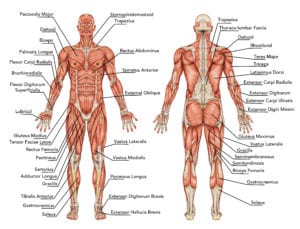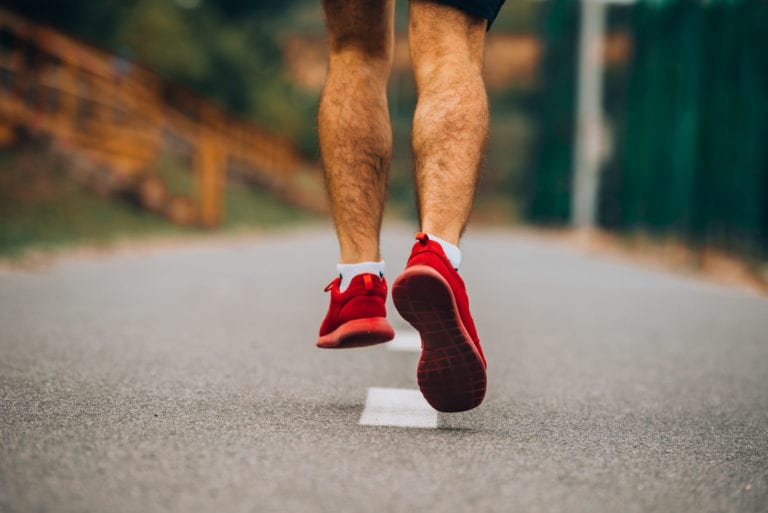Breathing is not one of the topics most of us would spend too long thinking about, especially if you’re in good health and have no reason to watch your respiratory system. However, as you progress in your running or if you’ve just started running for fitness, you might find yourself wondering why breathing can feel hard or how to improve your breathing technique to help you run faster or longer.
Why is breathing while running difficult, and how can you develop your breathing for better running? There are numerous breathing exercises you can do to develop your aerobic capacity and get better at running at all paces.
In this article, we’ll first explore why you might have difficulty breathing as you run, and we’ll cover some techniques and tips to allow you to breathe easy when you next lace up your sneakers.
How Does Running Affect Your Breathing?
To understand how to improve your breathing, we first need to look at the breathing rhythm you fall into when running and why this changes from regular daily breaths. For a healthy person, you might question why you struggle to breathe while running, so let’s go back to basics.
When you move at a faster pace than normal, your body – specifically your muscles and respiratory system – needs to work harder to support the increase in movement. This is because your muscles will need more oxygen, and you’ll also need to remove the build-up of carbon dioxide in your body, which also makes breathing more difficult.
Moreover, runners take shorter inhales and exhales, which means they bring less oxygen into their lungs when they run. Most people don’t use their diaphragm – the muscle at the base of the lungs, which contracts to help us inhale fully.
As you get fitter, your breathing will also improve, as your body gets used to working a different pace, and what once felt difficult can become your new steady pace. This pattern of progress continues when you develop more efficient breathing, sometimes thanks to your cardiovascular system getting stronger, and sometimes thanks to focusing on nose vs mouth breathing and doing some very specific exercises.
If you are unfit or at the beginning of your running training, you will quickly feel out of breath when you push the pace. More seriously, you could start wheezing and feel tightness in your chest, especially if you have some additional health concerns. If that is the case, you should consult your doctor right away.
Mouth Breathing Vs Nasal Breathing
There are many resources focused on improving nose breathing instead of breathing through your mouth when you run. However, the type of breathing you adopt may not be all that important: experts generally agree that you just need to have a relaxed rhythm, which you can achieve by breathing through your nose or mouth.
In fact, being able to do both types of breathing is probably best for you, as it will help you improve the circulation of air to your lungs. Besides, you know when you have a blocked nose, and you breathe through your mouth instead? Being able to switch is useful in various such situations and can prove very beneficial in longer endurance events.
Another important point here is that breathing exclusively through your mouth could lead to hyperventilating, as many of us tend to do when running at a higher than comfortable pace. This pushes up your heart rate artificially and can create a false perception of effort, which in turn can trigger a psychological response to running, according to which you believe you’re more fatigued than you really are. This is one of the reasons you see beginner runners out of breath after a couple of easy miles.
Finally, in the debate between mouth breathing and nose breathing, you should know that you can use alternating breaths, i.e. inhale through your nose and exhale through your mouth, to control your heart rate or help with the onset of stitches. Additionally, belly breathing or diaphragmatic breathing also help in those situations (more on that below).
Exercises For Running Breathing
Developing a rhythmic breathing pattern during your runs will help you in long endurance sessions and make shorter runs more fun and less effort. However, these breathing tips only apply to your steady pace runs. When it comes to interval training and speed work, paying attention to breathing is nowhere near as practical, and it will be normal for you to get out of breath as you push your muscles past the lactic threshold. So don’t worry too much in those situations!
Diaphragm Breathing (Deep Belly Breathing)
This is the go-to breathing exercise for those looking to stabilize their breathing style and develop a steady rhythm. Follow these three steps to practice your belly breathing:
1. Lie down on your back, with one hand on your chest and the other on your belly. Take a few deep breaths and notice where they are coming from: in the upper chest or the belly?
2. Activate your diaphragm: take a deep breath in through your nose, and feel as it fills up your chest and lungs. Go on until you can literally feel the air in your belly.
3. Exhale deeply through your mouth until you feel like you’ve completely emptied your chest and belly.
You should repeat this cycle a few times, up to 10 repetitions. The rhythmic breathing activates your diaphragm and gets it used to being called upon when you make more effort during running.
Nose Breathing
Once you have practiced belly breathing a few times, try to do a few drills where you only breathe through your nose before your next run. Ideally, if you close your mouth and take 8-10 breaths just through your nose, you should start to feel the belly breathing kick in (as opposed to shallow chest breathing).
When you next do an easy run, try to focus on spending 5-10 minutes breathing solely through the nose. At first, this type of breathing will feel uncomfortable, and you might even feel like you’re not getting enough air. With time, you can develop this into a regular breathing pattern that you carry on with for the rest of your run. Listen to your body and increase nose breathing a little bit at a time.
Breathing And Cadence Drills
One of the most efficient ways to control your oxygen intake and match your breathing to any speed, from a moderate pace to running intervals, is to explore ways to match your breathing to your cadence. Using cadence (the number of steps per minute you’re taking when you run) is simple to do, doesn’t require any fancy prep, and advanced runners as well as beginners can use this technique.
To do these drills, start by running at an easy or moderate pace, and count how many steps it takes you for one full inhale and one full exhale. After you’ve established a breathing baseline, start experimenting with creating symmetry between your breaths in and out.
Some breath patterns that work for elite runners are: 4:4 (in for 4 steps, out for 4 steps) or 2:2 (take two steps, one with your left foot and one with your right foot while you breathe in, and then two steps while breathing out). This is known as locomotor-respiratory coordination or coupling (LCR) – simply put, matching your breathing to your cadence.
Research suggests that establishing proper breath control through LCR helps reduce the stress placed on the diaphragm and enables you to inhale and exhale more efficiently. But it doesn’t have to be a set number or even a symmetry between number of breaths and cadence. In fact, there is research pointing to the fact that most runners prefer a 2:1 rhythm (breathe in for two steps, out for one).
Breathing While Sprinting
All the drills and breath patterns described so far seem to work best when performing easier runs or for long-distance runners trying to stay alert and move efficiently during very long days. However, how do you meet your oxygen demands when you’re doing high-intensity training or interval training?
Although it seems counterintuitive, if you suffer from the dreaded side stitch when pushing the pace, the most important thing you can do is avoid shallow breathing from the top of your chest. Focus, instead, on deep belly breathing. This should improve your oxygen levels, and the amount of carbon dioxide in your exhales, which will make you more efficient and less fatigued. It also means that your diaphragm contracts less, leading to a lower likelihood of developing stitches.
Frequently Asked Questions About How To Breathe While Running
My mouth gets dry when I breathe through it while running. Any advice?
If you breathe predominantly through your mouth during your runs, you’re taking in shallow breaths and are very likely breathing too quickly for your pace. In addition, all the air going in and coming out of your mouth will cause it to dry up, while at the same time, you’re getting dehydrated through sweat from the effort.
Try to use some of the drills in this article and focus on breathing in through your nose, out through your mouth. Avoid shallow breathing by doing some belly breath drills, and when running at speed, try to employ belly breathing if you can.
Is it better to breathe through your nose or mouth while running?
There is no definitive right or wrong answer here. Some runners prefer to breathe in through the nose, out through the mouth, while many never stop breathing exclusively through the mouth. Deep breaths engaging your deep belly, rather than pressurizing your diaphragm, are better for being an efficient runner and for controlling your heart rate along with your breath pattern.
However, the best thing you can do is try the various drills above and see what works for you, depending on the type of run you’re doing.
What is rhythmic breathing?
Rhythmic breathing refers to counting the number of breaths you take in and out, either by connecting breaths to steps or keeping track of your inhales and exhales separately. You can establish a pattern that makes sense for your space, for example, 5:2 (5 breaths in, 2 breaths out) or 2:2 (breathe in for 2 steps, out for 2 steps).
Proper Breathing and Running: What You Should Do Next
Ultimately, whether deep breathing or a rhythmic pattern works for you, or if you prefer shallow breaths when you run, there is no right or wrong answer. However, breathing patterns for runners become more important if you struggle with shortness of breath or an artificial feeling of fatigue induced by the way you’re breathing during your runs. If that’s the case, using some of the drills and tips in this article should help break those negative patterns and make you more efficient.
Regardless of what breathing team you’re in, make sure you listen to your body to stay injury-free and consult a doctor if you have serious concerns around breathing well.


























